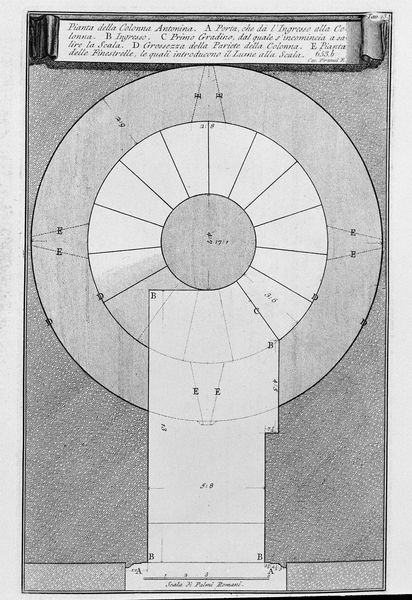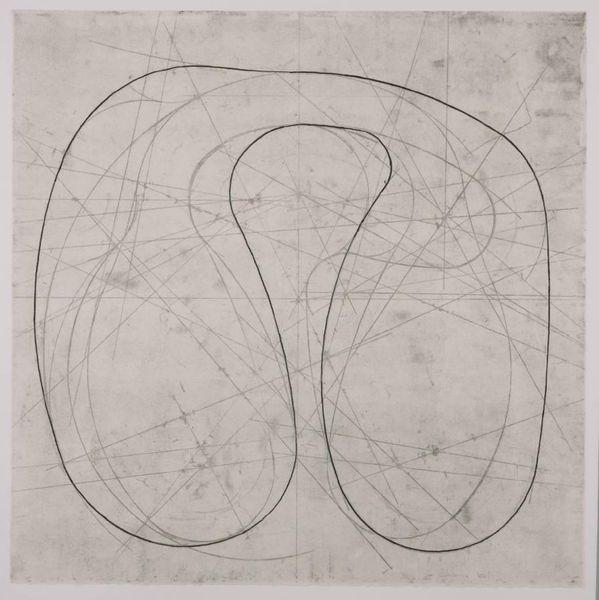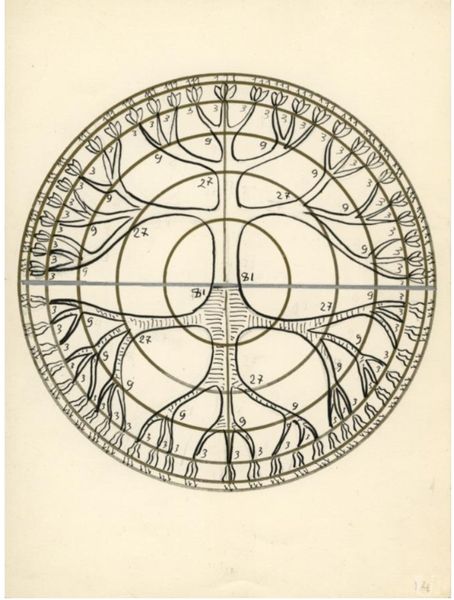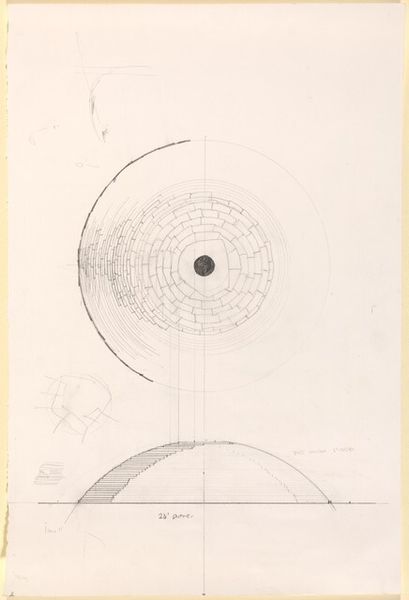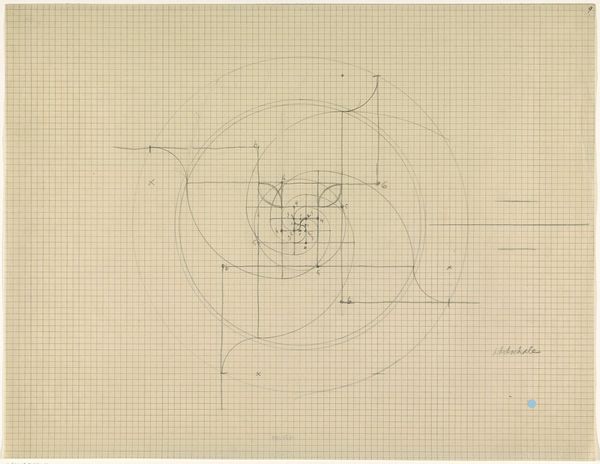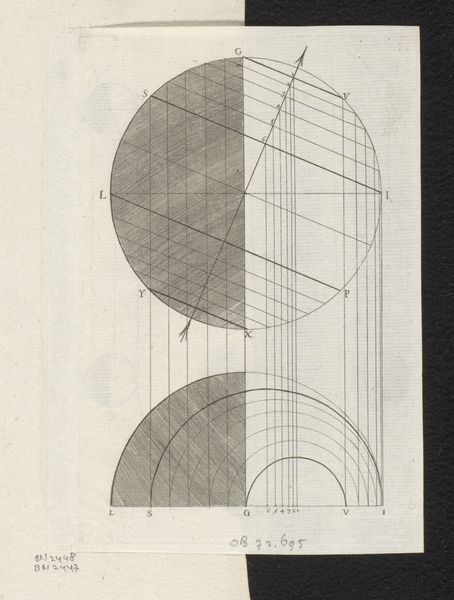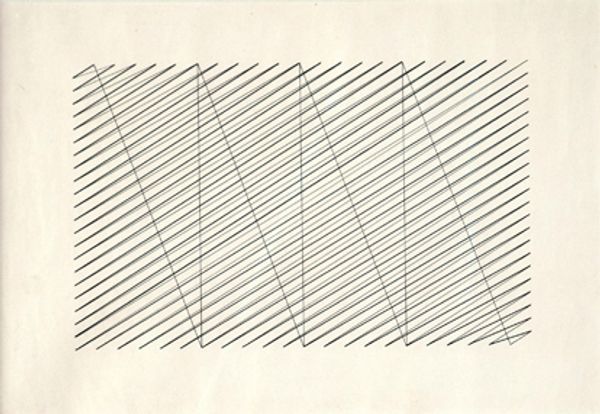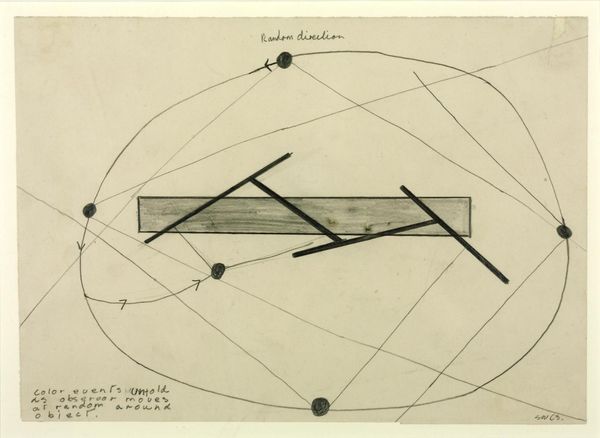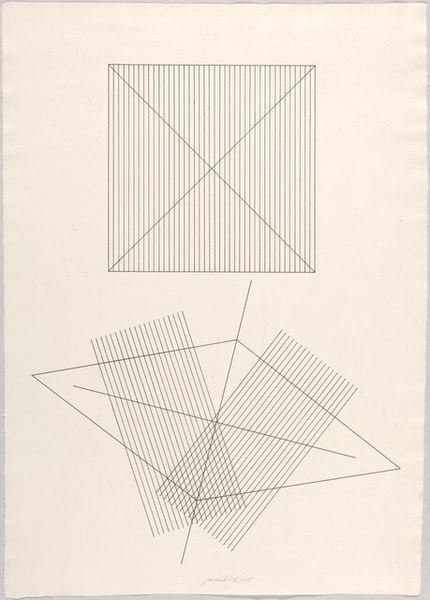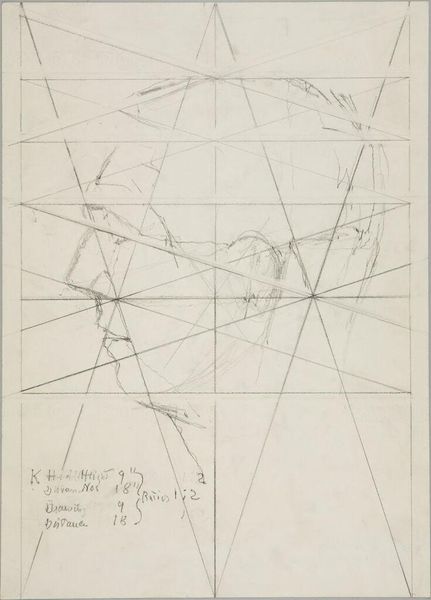
drawing, graphite
#
drawing
#
conceptual-art
#
geometric
#
abstraction
#
line
#
graphite
Copyright: Ruth Vollmer,Fair Use
Curator: What do you make of this, our visitors may wonder? It is a graphite drawing, an "Oval Construction," sketched by Ruth Vollmer in 1970. The title in German is "Konstruktionszeichnung," which has connotations of design. Editor: Well, it looks a bit like a technical diagram. I’m immediately drawn to its systematic order. There's a captivating calm about its rational linework and subtle tonal shifts, which brings mathematical ideas to life, ideas which have always been relevant in the human quest for comprehension and security. Curator: And don’t forget, Vollmer was part of a larger, evolving discourse surrounding geometric abstraction during that period, grappling with minimalism, seriality, and process-based art. Viewing it in this framework allows us to look past a simple arrangement of lines. Her gender and the wider social and political implications are, I feel, inseparable here. Editor: Indeed. Beyond the aesthetic, such a precise drawing possesses an archetypal quality. Think of mandalas, sacred geometry – the oval as a primal shape connected to creation and cycles. Vollmer's composition reflects humanity’s fundamental quest to capture the world’s building blocks. She invokes this collective quest with very limited imagery, the circle is almost ubiquitous across human experience, the line used sparingly but impactfully. Curator: So, Vollmer used her work to challenge traditional structures through a kind of controlled intervention – not unlike second wave feminists working at the time to dismantle old hierarchies. What we observe, isn't simply visual: it is symbolic of power dynamics in art. Editor: True. Ultimately, this work highlights art's ability to blend universal patterns with profound meaning. It’s remarkable to consider that graphite is used here, usually found in quotidian pencils – here it invokes something beyond our everyday comprehension of such geometric shapes. Curator: Thanks to her work, we see how seemingly straightforward visuals encode deep historical, cultural and, yes, political layers. Editor: It gives us so much to think about – seeing connections where we never knew existed.
Comments
No comments
Be the first to comment and join the conversation on the ultimate creative platform.
